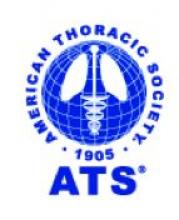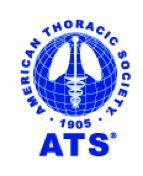User login
Certolizumab pegol shows promise for nr-axSpA treatment
Certolizumab pegol was effective at treating nonradiographic axial spondyloarthritis, the first drug to show positive results with the disease, according to topline data from a phase 3, placebo-controlled trial.
After 52 weeks, 47.2% of adult nonradiographic axial spondyloarthritis (nr-axSpA) patients within the C-AXSPAND trial who received certolizumab pegol (Cimzia) achieved at least a 2-point improvement on their Ankylosing Spondylitis Disease Activity Score, compared with 7.0% of nr-axSpA patients who received a placebo. In addition, patients who received certolizumab pegol also met the Assessment of Spondyloarthritis International Society criteria of 40% response after 12 weeks.
“People living with nr-axSpA frequently face delayed or incorrect diagnosis, and currently, in the U.S., there are no FDA-approved options to treat this condition. The C-AXSPAND study results provide important insights into the potential of Cimzia as an effective and durable treatment option for these patients,” Atul Deodhar, MD, professor of medicine at Oregon Health and Science University, Portland, and a lead investigator of the study, said in an announcement from certolizumab’s manufacturer, UCB.
Certolizumab pegol is currently indicated for the treatment of moderate to severe RA, active psoriatic arthritis, and active ankylosing spondylitis, as well as for the reduction of Crohn’s disease symptoms. The most common adverse events in RA, psoriatic arthritis, and ankylosing spondylitis are upper respiratory tract infection, headache, hypertension, nasopharyngitis, back pain, pyrexia, pharyngitis, and rash.
Certolizumab pegol was effective at treating nonradiographic axial spondyloarthritis, the first drug to show positive results with the disease, according to topline data from a phase 3, placebo-controlled trial.
After 52 weeks, 47.2% of adult nonradiographic axial spondyloarthritis (nr-axSpA) patients within the C-AXSPAND trial who received certolizumab pegol (Cimzia) achieved at least a 2-point improvement on their Ankylosing Spondylitis Disease Activity Score, compared with 7.0% of nr-axSpA patients who received a placebo. In addition, patients who received certolizumab pegol also met the Assessment of Spondyloarthritis International Society criteria of 40% response after 12 weeks.
“People living with nr-axSpA frequently face delayed or incorrect diagnosis, and currently, in the U.S., there are no FDA-approved options to treat this condition. The C-AXSPAND study results provide important insights into the potential of Cimzia as an effective and durable treatment option for these patients,” Atul Deodhar, MD, professor of medicine at Oregon Health and Science University, Portland, and a lead investigator of the study, said in an announcement from certolizumab’s manufacturer, UCB.
Certolizumab pegol is currently indicated for the treatment of moderate to severe RA, active psoriatic arthritis, and active ankylosing spondylitis, as well as for the reduction of Crohn’s disease symptoms. The most common adverse events in RA, psoriatic arthritis, and ankylosing spondylitis are upper respiratory tract infection, headache, hypertension, nasopharyngitis, back pain, pyrexia, pharyngitis, and rash.
Certolizumab pegol was effective at treating nonradiographic axial spondyloarthritis, the first drug to show positive results with the disease, according to topline data from a phase 3, placebo-controlled trial.
After 52 weeks, 47.2% of adult nonradiographic axial spondyloarthritis (nr-axSpA) patients within the C-AXSPAND trial who received certolizumab pegol (Cimzia) achieved at least a 2-point improvement on their Ankylosing Spondylitis Disease Activity Score, compared with 7.0% of nr-axSpA patients who received a placebo. In addition, patients who received certolizumab pegol also met the Assessment of Spondyloarthritis International Society criteria of 40% response after 12 weeks.
“People living with nr-axSpA frequently face delayed or incorrect diagnosis, and currently, in the U.S., there are no FDA-approved options to treat this condition. The C-AXSPAND study results provide important insights into the potential of Cimzia as an effective and durable treatment option for these patients,” Atul Deodhar, MD, professor of medicine at Oregon Health and Science University, Portland, and a lead investigator of the study, said in an announcement from certolizumab’s manufacturer, UCB.
Certolizumab pegol is currently indicated for the treatment of moderate to severe RA, active psoriatic arthritis, and active ankylosing spondylitis, as well as for the reduction of Crohn’s disease symptoms. The most common adverse events in RA, psoriatic arthritis, and ankylosing spondylitis are upper respiratory tract infection, headache, hypertension, nasopharyngitis, back pain, pyrexia, pharyngitis, and rash.
Collagen drinks – do they really work?
The question is, do they really do anything? Previously, most collagen supplements in the beauty industry came in the form of a topical cream or an injectable, with collagen being the main filler of choice before hyaluronic acid fillers became available. Today, collagen supplementation in the form of oral pills and drinks is rampant. These drinks and “vitamins” are purported to improve skin and provide a more youthful appearance, both from an immediate and preventative standpoint. Some of the drinks come from companies in Japan and beyond. According to market forecasts, the collagen supplement industry is anticipated to be worth $6.63 billion by 2025, up from $3.71 billion in 2016. An email advertisement this month from NewBeauty magazine claims one brand of collagen supplementation “with grape seed extract [as] an effective collagen drink for the skin.” Each 1.7 oz. bottle contains 13,000 mg of marine hydrolyzed collagen with six antiaging ingredients that – the ad claims – will help visibly transform your skin to a fuller, firmer, younger look in as soon as 21 days.
Diet absolutely plays a role in our overall health and skin appearance. But can these concentrated collagen drinks provide an increased benefit?
We know from prior experience with injecting collagen in the lips – namely from bovine (such as Zyderm and Zyplast) or human-derived (such as Cosmoderm and CosmoPlast) sources – that it provided beautiful and often natural-appearing results, which, however, did not last. If longevity is an issue with collagen injections, assuming proper absorption from the gastrointestinal tract and subsequent integration into skin, how long should we expect the results from drinking collagen to last in skin, if any? If it does work and is something that improves skin when used on a continuous basis, is there an endpoint at which the benefit is maximized or where an excess of collagen could be detrimental?
Collagen disorders are those where there is inflammation or deficiency in collagen. Could supplementation improve these diseases? Or could supplementation exacerbate or bring on these disorders if consumed in excess? In collagen vascular diseases, such as scleroderma, where apparent autoimmune inflammation of collagen occurs, would supplementation exacerbate the disease by bringing about more collagen to attack, or would it improve the condition by providing new collagen where there may be a defect? Would it help in conditions of collagen deficiency, such as osteogenesis imperfecta?
Many questions about collagen drinks and supplementation remain to be answered. Photoprotection from an early age and a healthy diet that supports production of our bodies’ own natural collagen are the best measures for skin health. With the surplus of collagen drinks and supplements now on the market, objective studies should be conducted and are warranted to answer these question for ourselves and our patients.
Dr. Wesley and Dr. Talakoub are cocontributors to this column. Dr. Wesley practices dermatology in Beverly Hills, Calif. Dr. Talakoub is in private practice in McLean, Va. This month’s column is by Dr. Wesley. Write to them at dermnews@mdedge.com. They had no relevant disclosures.
The question is, do they really do anything? Previously, most collagen supplements in the beauty industry came in the form of a topical cream or an injectable, with collagen being the main filler of choice before hyaluronic acid fillers became available. Today, collagen supplementation in the form of oral pills and drinks is rampant. These drinks and “vitamins” are purported to improve skin and provide a more youthful appearance, both from an immediate and preventative standpoint. Some of the drinks come from companies in Japan and beyond. According to market forecasts, the collagen supplement industry is anticipated to be worth $6.63 billion by 2025, up from $3.71 billion in 2016. An email advertisement this month from NewBeauty magazine claims one brand of collagen supplementation “with grape seed extract [as] an effective collagen drink for the skin.” Each 1.7 oz. bottle contains 13,000 mg of marine hydrolyzed collagen with six antiaging ingredients that – the ad claims – will help visibly transform your skin to a fuller, firmer, younger look in as soon as 21 days.
Diet absolutely plays a role in our overall health and skin appearance. But can these concentrated collagen drinks provide an increased benefit?
We know from prior experience with injecting collagen in the lips – namely from bovine (such as Zyderm and Zyplast) or human-derived (such as Cosmoderm and CosmoPlast) sources – that it provided beautiful and often natural-appearing results, which, however, did not last. If longevity is an issue with collagen injections, assuming proper absorption from the gastrointestinal tract and subsequent integration into skin, how long should we expect the results from drinking collagen to last in skin, if any? If it does work and is something that improves skin when used on a continuous basis, is there an endpoint at which the benefit is maximized or where an excess of collagen could be detrimental?
Collagen disorders are those where there is inflammation or deficiency in collagen. Could supplementation improve these diseases? Or could supplementation exacerbate or bring on these disorders if consumed in excess? In collagen vascular diseases, such as scleroderma, where apparent autoimmune inflammation of collagen occurs, would supplementation exacerbate the disease by bringing about more collagen to attack, or would it improve the condition by providing new collagen where there may be a defect? Would it help in conditions of collagen deficiency, such as osteogenesis imperfecta?
Many questions about collagen drinks and supplementation remain to be answered. Photoprotection from an early age and a healthy diet that supports production of our bodies’ own natural collagen are the best measures for skin health. With the surplus of collagen drinks and supplements now on the market, objective studies should be conducted and are warranted to answer these question for ourselves and our patients.
Dr. Wesley and Dr. Talakoub are cocontributors to this column. Dr. Wesley practices dermatology in Beverly Hills, Calif. Dr. Talakoub is in private practice in McLean, Va. This month’s column is by Dr. Wesley. Write to them at dermnews@mdedge.com. They had no relevant disclosures.
The question is, do they really do anything? Previously, most collagen supplements in the beauty industry came in the form of a topical cream or an injectable, with collagen being the main filler of choice before hyaluronic acid fillers became available. Today, collagen supplementation in the form of oral pills and drinks is rampant. These drinks and “vitamins” are purported to improve skin and provide a more youthful appearance, both from an immediate and preventative standpoint. Some of the drinks come from companies in Japan and beyond. According to market forecasts, the collagen supplement industry is anticipated to be worth $6.63 billion by 2025, up from $3.71 billion in 2016. An email advertisement this month from NewBeauty magazine claims one brand of collagen supplementation “with grape seed extract [as] an effective collagen drink for the skin.” Each 1.7 oz. bottle contains 13,000 mg of marine hydrolyzed collagen with six antiaging ingredients that – the ad claims – will help visibly transform your skin to a fuller, firmer, younger look in as soon as 21 days.
Diet absolutely plays a role in our overall health and skin appearance. But can these concentrated collagen drinks provide an increased benefit?
We know from prior experience with injecting collagen in the lips – namely from bovine (such as Zyderm and Zyplast) or human-derived (such as Cosmoderm and CosmoPlast) sources – that it provided beautiful and often natural-appearing results, which, however, did not last. If longevity is an issue with collagen injections, assuming proper absorption from the gastrointestinal tract and subsequent integration into skin, how long should we expect the results from drinking collagen to last in skin, if any? If it does work and is something that improves skin when used on a continuous basis, is there an endpoint at which the benefit is maximized or where an excess of collagen could be detrimental?
Collagen disorders are those where there is inflammation or deficiency in collagen. Could supplementation improve these diseases? Or could supplementation exacerbate or bring on these disorders if consumed in excess? In collagen vascular diseases, such as scleroderma, where apparent autoimmune inflammation of collagen occurs, would supplementation exacerbate the disease by bringing about more collagen to attack, or would it improve the condition by providing new collagen where there may be a defect? Would it help in conditions of collagen deficiency, such as osteogenesis imperfecta?
Many questions about collagen drinks and supplementation remain to be answered. Photoprotection from an early age and a healthy diet that supports production of our bodies’ own natural collagen are the best measures for skin health. With the surplus of collagen drinks and supplements now on the market, objective studies should be conducted and are warranted to answer these question for ourselves and our patients.
Dr. Wesley and Dr. Talakoub are cocontributors to this column. Dr. Wesley practices dermatology in Beverly Hills, Calif. Dr. Talakoub is in private practice in McLean, Va. This month’s column is by Dr. Wesley. Write to them at dermnews@mdedge.com. They had no relevant disclosures.
CHEST® Physician’s preview of ATS 2018
Here is a glimpse of some of the important research that will be presented at this meeting.
The findings of several chronic obstructive pulmonary disease (COPD) drug trials will be discussed during a session entitled “ICS [Inhaled corticosteroids] in COPD: The Pendulum Keeps Swinging,” which is scheduled to occur at 9:15 a.m. in Room 14 A-B (Mezzanine Level). Among the research to be presented are the latest findings of the phase 3 IMPACT study of 10,355 symptomatic COPD patients with a history of moderate to severe exacerbations. This study compared the use of an inhaled therapy that comprised a corticosteroid, a long-acting muscarinic antagonist (LAMA), and a long-acting beta2-agonist (LABA) with the use of two other therapy combinations – a corticosteroid and a LABA, or a LABA and a LAMA. (Lipson DA et al. N Engl J Med. 2018 Apr 18;378:1671-80). Patients were randomized to receive either a once-daily combination of 100 mcg fluticasone furoate (a corticosteroid); 62.5 mcg of the LAMA, umeclidinium; and 25 mcg of the LABA, vilanterol; or dual inhaled therapy involving either 100 mcg fluticasone furoate plus 25 mcg of vilanterol, or 62.5 mcg of umeclidinium plus 25 mcg of vilanterol for 52 weeks.
One of the updates on this trial is that using the triple therapy significantly reduced on-treatment all-cause mortality over using the LAMA (62.5 mcg of umeclidinium) plus LABA (25 mcg of the vilanterol) dual therapy. Fifty of the patients who received triple therapy died (1.20%), versus 49 patients in the corticosteroid plus LABA group (1.19%) and 30 patients (1.88%) in the LAMA plus LABA group. A 42.1% reduction in risk of all-cause mortality occurred for patients who took the triple therapy, when compared with patients who took the LAMA/LABA combo (95% confidence interval, 11.9%-61.9%; P = .011), according to an abstract on the ATS International Conference’s website.
At the same time on Sunday, researchers will be presenting their research in a session entitled “Sleep Disordered Breathing, Cardiovascular Disease, and Mortality,” in Room 3 (Upper Level) of the convention center. One of the abstracts that will be discussed compared the long-term effectiveness of noninvasive ventilation (NIV) with continuous positive airway pressure (CPAP) in patients with obesity hypoventilation syndrome with severe obstructive sleep apnea. In this multicenter open-label, randomized, controlled trial, Sanchez Quiroga M et al. analyzed the results for 202 patients who used one of the two treatments for at least 3 years. Among this study’s findings were that the mortality rates and the number of cardiovascular events that occurred were similar in the two treatment groups. The mortality rate for patients who used CPAP was 14.7%, compared with 11.3% for the patients who received NIV (adjusted hazard ratio, 0.73; P = .439), and the cardiovascular events per 100 person-years were 5.1 for CPAP and 7.46 for NIV (P = .315). The researchers concluded that both treatments are equally effective for the long term, but that CPAP should be “the preferred treatment modality,” because it’s cheaper and easier to implement.
On Monday morning, researchers will present their findings of the short-term cardiovascular effects of 30 pulmonary arterial hypertension patients’ use of the beta blocker carvedilol, in 3.125 mg doses taken twice a day. Right ventricular systolic pressure (RVSP) decreased by an average of 11 mmHg (P = .003) in this double-blinded, randomized, controlled open-label trial with a 1-week run-in period. Cardiac output decreased by an average of –1.8 L/min (P less than .0001), but RVSP was inversely associated with cardiac output. “Short-term carvedilol could potentially identify a subgroup for long-term therapy based on initial drop in RVSP and heart rate response,” noted Farha SY et al. in their abstract. None of the patients experienced any side effects from taking the drug. More details on this research and other studies on pulmonary hypertension will be presented at 9:15 am in Area B (Hall A-B2, Ground level) of the convention center, in the session entitled “Surf’s Up: Riding the Wave of Clinical Research in Pulmonary Hypertension.”
Look for all of our on-site coverage of the conference at mdedge.com/chestphysician next week.
Here is a glimpse of some of the important research that will be presented at this meeting.
The findings of several chronic obstructive pulmonary disease (COPD) drug trials will be discussed during a session entitled “ICS [Inhaled corticosteroids] in COPD: The Pendulum Keeps Swinging,” which is scheduled to occur at 9:15 a.m. in Room 14 A-B (Mezzanine Level). Among the research to be presented are the latest findings of the phase 3 IMPACT study of 10,355 symptomatic COPD patients with a history of moderate to severe exacerbations. This study compared the use of an inhaled therapy that comprised a corticosteroid, a long-acting muscarinic antagonist (LAMA), and a long-acting beta2-agonist (LABA) with the use of two other therapy combinations – a corticosteroid and a LABA, or a LABA and a LAMA. (Lipson DA et al. N Engl J Med. 2018 Apr 18;378:1671-80). Patients were randomized to receive either a once-daily combination of 100 mcg fluticasone furoate (a corticosteroid); 62.5 mcg of the LAMA, umeclidinium; and 25 mcg of the LABA, vilanterol; or dual inhaled therapy involving either 100 mcg fluticasone furoate plus 25 mcg of vilanterol, or 62.5 mcg of umeclidinium plus 25 mcg of vilanterol for 52 weeks.
One of the updates on this trial is that using the triple therapy significantly reduced on-treatment all-cause mortality over using the LAMA (62.5 mcg of umeclidinium) plus LABA (25 mcg of the vilanterol) dual therapy. Fifty of the patients who received triple therapy died (1.20%), versus 49 patients in the corticosteroid plus LABA group (1.19%) and 30 patients (1.88%) in the LAMA plus LABA group. A 42.1% reduction in risk of all-cause mortality occurred for patients who took the triple therapy, when compared with patients who took the LAMA/LABA combo (95% confidence interval, 11.9%-61.9%; P = .011), according to an abstract on the ATS International Conference’s website.
At the same time on Sunday, researchers will be presenting their research in a session entitled “Sleep Disordered Breathing, Cardiovascular Disease, and Mortality,” in Room 3 (Upper Level) of the convention center. One of the abstracts that will be discussed compared the long-term effectiveness of noninvasive ventilation (NIV) with continuous positive airway pressure (CPAP) in patients with obesity hypoventilation syndrome with severe obstructive sleep apnea. In this multicenter open-label, randomized, controlled trial, Sanchez Quiroga M et al. analyzed the results for 202 patients who used one of the two treatments for at least 3 years. Among this study’s findings were that the mortality rates and the number of cardiovascular events that occurred were similar in the two treatment groups. The mortality rate for patients who used CPAP was 14.7%, compared with 11.3% for the patients who received NIV (adjusted hazard ratio, 0.73; P = .439), and the cardiovascular events per 100 person-years were 5.1 for CPAP and 7.46 for NIV (P = .315). The researchers concluded that both treatments are equally effective for the long term, but that CPAP should be “the preferred treatment modality,” because it’s cheaper and easier to implement.
On Monday morning, researchers will present their findings of the short-term cardiovascular effects of 30 pulmonary arterial hypertension patients’ use of the beta blocker carvedilol, in 3.125 mg doses taken twice a day. Right ventricular systolic pressure (RVSP) decreased by an average of 11 mmHg (P = .003) in this double-blinded, randomized, controlled open-label trial with a 1-week run-in period. Cardiac output decreased by an average of –1.8 L/min (P less than .0001), but RVSP was inversely associated with cardiac output. “Short-term carvedilol could potentially identify a subgroup for long-term therapy based on initial drop in RVSP and heart rate response,” noted Farha SY et al. in their abstract. None of the patients experienced any side effects from taking the drug. More details on this research and other studies on pulmonary hypertension will be presented at 9:15 am in Area B (Hall A-B2, Ground level) of the convention center, in the session entitled “Surf’s Up: Riding the Wave of Clinical Research in Pulmonary Hypertension.”
Look for all of our on-site coverage of the conference at mdedge.com/chestphysician next week.
Here is a glimpse of some of the important research that will be presented at this meeting.
The findings of several chronic obstructive pulmonary disease (COPD) drug trials will be discussed during a session entitled “ICS [Inhaled corticosteroids] in COPD: The Pendulum Keeps Swinging,” which is scheduled to occur at 9:15 a.m. in Room 14 A-B (Mezzanine Level). Among the research to be presented are the latest findings of the phase 3 IMPACT study of 10,355 symptomatic COPD patients with a history of moderate to severe exacerbations. This study compared the use of an inhaled therapy that comprised a corticosteroid, a long-acting muscarinic antagonist (LAMA), and a long-acting beta2-agonist (LABA) with the use of two other therapy combinations – a corticosteroid and a LABA, or a LABA and a LAMA. (Lipson DA et al. N Engl J Med. 2018 Apr 18;378:1671-80). Patients were randomized to receive either a once-daily combination of 100 mcg fluticasone furoate (a corticosteroid); 62.5 mcg of the LAMA, umeclidinium; and 25 mcg of the LABA, vilanterol; or dual inhaled therapy involving either 100 mcg fluticasone furoate plus 25 mcg of vilanterol, or 62.5 mcg of umeclidinium plus 25 mcg of vilanterol for 52 weeks.
One of the updates on this trial is that using the triple therapy significantly reduced on-treatment all-cause mortality over using the LAMA (62.5 mcg of umeclidinium) plus LABA (25 mcg of the vilanterol) dual therapy. Fifty of the patients who received triple therapy died (1.20%), versus 49 patients in the corticosteroid plus LABA group (1.19%) and 30 patients (1.88%) in the LAMA plus LABA group. A 42.1% reduction in risk of all-cause mortality occurred for patients who took the triple therapy, when compared with patients who took the LAMA/LABA combo (95% confidence interval, 11.9%-61.9%; P = .011), according to an abstract on the ATS International Conference’s website.
At the same time on Sunday, researchers will be presenting their research in a session entitled “Sleep Disordered Breathing, Cardiovascular Disease, and Mortality,” in Room 3 (Upper Level) of the convention center. One of the abstracts that will be discussed compared the long-term effectiveness of noninvasive ventilation (NIV) with continuous positive airway pressure (CPAP) in patients with obesity hypoventilation syndrome with severe obstructive sleep apnea. In this multicenter open-label, randomized, controlled trial, Sanchez Quiroga M et al. analyzed the results for 202 patients who used one of the two treatments for at least 3 years. Among this study’s findings were that the mortality rates and the number of cardiovascular events that occurred were similar in the two treatment groups. The mortality rate for patients who used CPAP was 14.7%, compared with 11.3% for the patients who received NIV (adjusted hazard ratio, 0.73; P = .439), and the cardiovascular events per 100 person-years were 5.1 for CPAP and 7.46 for NIV (P = .315). The researchers concluded that both treatments are equally effective for the long term, but that CPAP should be “the preferred treatment modality,” because it’s cheaper and easier to implement.
On Monday morning, researchers will present their findings of the short-term cardiovascular effects of 30 pulmonary arterial hypertension patients’ use of the beta blocker carvedilol, in 3.125 mg doses taken twice a day. Right ventricular systolic pressure (RVSP) decreased by an average of 11 mmHg (P = .003) in this double-blinded, randomized, controlled open-label trial with a 1-week run-in period. Cardiac output decreased by an average of –1.8 L/min (P less than .0001), but RVSP was inversely associated with cardiac output. “Short-term carvedilol could potentially identify a subgroup for long-term therapy based on initial drop in RVSP and heart rate response,” noted Farha SY et al. in their abstract. None of the patients experienced any side effects from taking the drug. More details on this research and other studies on pulmonary hypertension will be presented at 9:15 am in Area B (Hall A-B2, Ground level) of the convention center, in the session entitled “Surf’s Up: Riding the Wave of Clinical Research in Pulmonary Hypertension.”
Look for all of our on-site coverage of the conference at mdedge.com/chestphysician next week.
FROM ATS 2018
SCVD common in women with type 1 diabetes
BOSTON – Women with type 1 diabetes had a high prevalence of systemic collagen vascular diseases in a recent study, suggesting a global or progressive loss of immune tolerance, investigators reported at the annual meeting of the American Association of Clinical Endocrinologists.
“The median time of diagnosis for most of those autoimmune diseases was years after the diabetes diagnosis,” according to investigator Yicheng Bao, a medical student at University of Missouri-Kansas City.*
“I think there’s some loss of immune tolerance in these patients with type 1 diabetes that really deserves more study as these patients get older,” Mr. Bao said in a video interview.
The study from Mr. Bao and his colleagues was based on patient questionnaire responses and medical chart reviews for 1,167 adults with type 1 diabetes, including 628 women.
They found that SCVDs occurred in 9.2% of women, who had a significantly higher risk versus men (adjusted odds ratio, 2.57; 95% confidence interval, 1.98-3.34; P less than 0.0001).
Rheumatoid arthritis was the most commonly diagnosed SCVD, occurring in 4.3% of the women, followed by psoriasis at 2.6% and lupus at 1.8%. Others occurring in less than 1% of women included Sjögren’s, mixed connective tissue disease, granulomatosis with polyangiitis, juvenile RA, and scleroderma.
Older women were at higher risk of SCVD, with a mean age of 53.6 years versus 46.3 years for women with no SCVD (P = 0.006).
Looking at both men and women, investigators found that individuals with type 1 diabetes and an SCVD were more likely to have other autoimmune diseases, such as hypothyroidism, hyperthyroidism, and celiac disease (adjusted OR, 2.8; 95% CI, 1.71-4.60; P less than 0.0001).
Based on these findings, clinicians taking care of adults with type 1 diabetes need to be vigilant about checking for collagen vascular autoimmune diseases on review of systems, particularly in older women, Mr. Bao said.
“If the patient has a collagen vascular autoimmune disease with type 1 diabetes, they really need to be checking for these other autoimmune diseases,” he added.
Mr. Bao had no disclosures to report.
*This article was updated on May 18, 2018.
BOSTON – Women with type 1 diabetes had a high prevalence of systemic collagen vascular diseases in a recent study, suggesting a global or progressive loss of immune tolerance, investigators reported at the annual meeting of the American Association of Clinical Endocrinologists.
“The median time of diagnosis for most of those autoimmune diseases was years after the diabetes diagnosis,” according to investigator Yicheng Bao, a medical student at University of Missouri-Kansas City.*
“I think there’s some loss of immune tolerance in these patients with type 1 diabetes that really deserves more study as these patients get older,” Mr. Bao said in a video interview.
The study from Mr. Bao and his colleagues was based on patient questionnaire responses and medical chart reviews for 1,167 adults with type 1 diabetes, including 628 women.
They found that SCVDs occurred in 9.2% of women, who had a significantly higher risk versus men (adjusted odds ratio, 2.57; 95% confidence interval, 1.98-3.34; P less than 0.0001).
Rheumatoid arthritis was the most commonly diagnosed SCVD, occurring in 4.3% of the women, followed by psoriasis at 2.6% and lupus at 1.8%. Others occurring in less than 1% of women included Sjögren’s, mixed connective tissue disease, granulomatosis with polyangiitis, juvenile RA, and scleroderma.
Older women were at higher risk of SCVD, with a mean age of 53.6 years versus 46.3 years for women with no SCVD (P = 0.006).
Looking at both men and women, investigators found that individuals with type 1 diabetes and an SCVD were more likely to have other autoimmune diseases, such as hypothyroidism, hyperthyroidism, and celiac disease (adjusted OR, 2.8; 95% CI, 1.71-4.60; P less than 0.0001).
Based on these findings, clinicians taking care of adults with type 1 diabetes need to be vigilant about checking for collagen vascular autoimmune diseases on review of systems, particularly in older women, Mr. Bao said.
“If the patient has a collagen vascular autoimmune disease with type 1 diabetes, they really need to be checking for these other autoimmune diseases,” he added.
Mr. Bao had no disclosures to report.
*This article was updated on May 18, 2018.
BOSTON – Women with type 1 diabetes had a high prevalence of systemic collagen vascular diseases in a recent study, suggesting a global or progressive loss of immune tolerance, investigators reported at the annual meeting of the American Association of Clinical Endocrinologists.
“The median time of diagnosis for most of those autoimmune diseases was years after the diabetes diagnosis,” according to investigator Yicheng Bao, a medical student at University of Missouri-Kansas City.*
“I think there’s some loss of immune tolerance in these patients with type 1 diabetes that really deserves more study as these patients get older,” Mr. Bao said in a video interview.
The study from Mr. Bao and his colleagues was based on patient questionnaire responses and medical chart reviews for 1,167 adults with type 1 diabetes, including 628 women.
They found that SCVDs occurred in 9.2% of women, who had a significantly higher risk versus men (adjusted odds ratio, 2.57; 95% confidence interval, 1.98-3.34; P less than 0.0001).
Rheumatoid arthritis was the most commonly diagnosed SCVD, occurring in 4.3% of the women, followed by psoriasis at 2.6% and lupus at 1.8%. Others occurring in less than 1% of women included Sjögren’s, mixed connective tissue disease, granulomatosis with polyangiitis, juvenile RA, and scleroderma.
Older women were at higher risk of SCVD, with a mean age of 53.6 years versus 46.3 years for women with no SCVD (P = 0.006).
Looking at both men and women, investigators found that individuals with type 1 diabetes and an SCVD were more likely to have other autoimmune diseases, such as hypothyroidism, hyperthyroidism, and celiac disease (adjusted OR, 2.8; 95% CI, 1.71-4.60; P less than 0.0001).
Based on these findings, clinicians taking care of adults with type 1 diabetes need to be vigilant about checking for collagen vascular autoimmune diseases on review of systems, particularly in older women, Mr. Bao said.
“If the patient has a collagen vascular autoimmune disease with type 1 diabetes, they really need to be checking for these other autoimmune diseases,” he added.
Mr. Bao had no disclosures to report.
*This article was updated on May 18, 2018.
REPORTING FROM AACE 2018
Key clinical point: The high incidence of systemic collagen vascular diseases in women with type 1 diabetes suggests a potential progressive loss of immune tolerance.
Major finding: Systemic collagen vascular diseases occurred in 9.2% of women, who had a significantly higher risk versus men (adjusted odds ratio, 2.57; 95% confidence interval, 1.98-3.34; P less than 0.0001).
Study details: A nonrandomized study including retrospective chart review and responses to questionnaires for 1,212 individuals with type 1 diabetes.
Disclosures: Mr. Bao had no disclosures to report.
VIDEO: Dual studies seek answers in isolated skin vasculitis
SANDESTIN, FLA. – Patients with isolated skin vasculitis have always faced a frustrating clinical problem with no clear solution.
The video associated with this article is no longer available on this site. Please view all of our videos on the MDedge YouTube channel
ARAMIS (A Randomized Multicenter Study for Isolated Skin Vasculitis) and its linked genetic investigation, CUTIS (Clinical Transcriptomics in Systemic Vasculitis), may finally identify not only optimal treatments but also insight into the root causes and predictors of treatment response, Christian Pagnoux, MD, said at the annual Congress of Clinical Rheumatology.
“Isolated skin vasculitis is a much-understudied disease, with only one clinical trial to guide our treatment,” said Dr. Pagnoux of the Mount Sinai Hospital, Toronto. In 1995, a 3-month trial randomized 41 patients to skin emollients or to colchicine 0.5 mg/day. Colchicine wasn’t significantly better, but some who had attained remission on it relapsed after discontinuing the drug, which suggested there might be some benefit (Arch Dermatol. 1995;131[12]:1399-1402).
That hint of efficacy in just three patients 23 years ago forms the sole basis of the typical treatment for this disorder: colchicine, Dr. Pagnoux said. “We know that it doesn’t work, yet we continue to prescribe it. Patients deserve better.”
ARAMIS and CUTIS are the first attempts since then at solving this puzzle. ARAMIS is now recruiting about 90 patients in 10 North American medical centers. The three-armed crossover trial will randomize patients to colchicine 0.6 mg twice a day, dapsone 150 mg/day, or azathioprine 2 mg/kg per day for 6 months. Nonresponders can then be rerandomized to one of the other two study drugs for another 6 months. The primary endpoint is clinical response. Secondary endpoints include changes in physician and patient global assessment of response, Skindex29 score, health-related quality of life, and the Patient-Reported Outcomes Measurement Information System.
ARAMIS patients may also participate in CUTIS, the linked histopathologic and genetic investigation. More broad-ranging than ARAMIS, CUTIS is seeking 50 patients with several forms of idiopathic vasculitis, including cryoglobulinemic vasculitis, drug-induced vasculitis, eosinophilic granulomatosis with polyangiitis, IgA vasculitis, isolated cutaneous vasculitis, granulomatosis with polyangiitis, microscopic polyangiitis, polyarteritis nodosa, and urticarial vasculitis.
The study will examine histopathologic and transcriptomic characteristics in punch biopsies of the lesions. “We very much hope that gene expression profiling on these lesions will help define novel pathways and help us to classify and target therapies,” Dr. Pagnoux said.
To learn more about these studies and refer patients into them, visit the Rare Disease Network pages for ARAMIS and CUTIS.
Dr. Pagnoux had no financial disclosures relevant to either study.
SOURCE: Pagnoux C. CCR 2018
SANDESTIN, FLA. – Patients with isolated skin vasculitis have always faced a frustrating clinical problem with no clear solution.
The video associated with this article is no longer available on this site. Please view all of our videos on the MDedge YouTube channel
ARAMIS (A Randomized Multicenter Study for Isolated Skin Vasculitis) and its linked genetic investigation, CUTIS (Clinical Transcriptomics in Systemic Vasculitis), may finally identify not only optimal treatments but also insight into the root causes and predictors of treatment response, Christian Pagnoux, MD, said at the annual Congress of Clinical Rheumatology.
“Isolated skin vasculitis is a much-understudied disease, with only one clinical trial to guide our treatment,” said Dr. Pagnoux of the Mount Sinai Hospital, Toronto. In 1995, a 3-month trial randomized 41 patients to skin emollients or to colchicine 0.5 mg/day. Colchicine wasn’t significantly better, but some who had attained remission on it relapsed after discontinuing the drug, which suggested there might be some benefit (Arch Dermatol. 1995;131[12]:1399-1402).
That hint of efficacy in just three patients 23 years ago forms the sole basis of the typical treatment for this disorder: colchicine, Dr. Pagnoux said. “We know that it doesn’t work, yet we continue to prescribe it. Patients deserve better.”
ARAMIS and CUTIS are the first attempts since then at solving this puzzle. ARAMIS is now recruiting about 90 patients in 10 North American medical centers. The three-armed crossover trial will randomize patients to colchicine 0.6 mg twice a day, dapsone 150 mg/day, or azathioprine 2 mg/kg per day for 6 months. Nonresponders can then be rerandomized to one of the other two study drugs for another 6 months. The primary endpoint is clinical response. Secondary endpoints include changes in physician and patient global assessment of response, Skindex29 score, health-related quality of life, and the Patient-Reported Outcomes Measurement Information System.
ARAMIS patients may also participate in CUTIS, the linked histopathologic and genetic investigation. More broad-ranging than ARAMIS, CUTIS is seeking 50 patients with several forms of idiopathic vasculitis, including cryoglobulinemic vasculitis, drug-induced vasculitis, eosinophilic granulomatosis with polyangiitis, IgA vasculitis, isolated cutaneous vasculitis, granulomatosis with polyangiitis, microscopic polyangiitis, polyarteritis nodosa, and urticarial vasculitis.
The study will examine histopathologic and transcriptomic characteristics in punch biopsies of the lesions. “We very much hope that gene expression profiling on these lesions will help define novel pathways and help us to classify and target therapies,” Dr. Pagnoux said.
To learn more about these studies and refer patients into them, visit the Rare Disease Network pages for ARAMIS and CUTIS.
Dr. Pagnoux had no financial disclosures relevant to either study.
SOURCE: Pagnoux C. CCR 2018
SANDESTIN, FLA. – Patients with isolated skin vasculitis have always faced a frustrating clinical problem with no clear solution.
The video associated with this article is no longer available on this site. Please view all of our videos on the MDedge YouTube channel
ARAMIS (A Randomized Multicenter Study for Isolated Skin Vasculitis) and its linked genetic investigation, CUTIS (Clinical Transcriptomics in Systemic Vasculitis), may finally identify not only optimal treatments but also insight into the root causes and predictors of treatment response, Christian Pagnoux, MD, said at the annual Congress of Clinical Rheumatology.
“Isolated skin vasculitis is a much-understudied disease, with only one clinical trial to guide our treatment,” said Dr. Pagnoux of the Mount Sinai Hospital, Toronto. In 1995, a 3-month trial randomized 41 patients to skin emollients or to colchicine 0.5 mg/day. Colchicine wasn’t significantly better, but some who had attained remission on it relapsed after discontinuing the drug, which suggested there might be some benefit (Arch Dermatol. 1995;131[12]:1399-1402).
That hint of efficacy in just three patients 23 years ago forms the sole basis of the typical treatment for this disorder: colchicine, Dr. Pagnoux said. “We know that it doesn’t work, yet we continue to prescribe it. Patients deserve better.”
ARAMIS and CUTIS are the first attempts since then at solving this puzzle. ARAMIS is now recruiting about 90 patients in 10 North American medical centers. The three-armed crossover trial will randomize patients to colchicine 0.6 mg twice a day, dapsone 150 mg/day, or azathioprine 2 mg/kg per day for 6 months. Nonresponders can then be rerandomized to one of the other two study drugs for another 6 months. The primary endpoint is clinical response. Secondary endpoints include changes in physician and patient global assessment of response, Skindex29 score, health-related quality of life, and the Patient-Reported Outcomes Measurement Information System.
ARAMIS patients may also participate in CUTIS, the linked histopathologic and genetic investigation. More broad-ranging than ARAMIS, CUTIS is seeking 50 patients with several forms of idiopathic vasculitis, including cryoglobulinemic vasculitis, drug-induced vasculitis, eosinophilic granulomatosis with polyangiitis, IgA vasculitis, isolated cutaneous vasculitis, granulomatosis with polyangiitis, microscopic polyangiitis, polyarteritis nodosa, and urticarial vasculitis.
The study will examine histopathologic and transcriptomic characteristics in punch biopsies of the lesions. “We very much hope that gene expression profiling on these lesions will help define novel pathways and help us to classify and target therapies,” Dr. Pagnoux said.
To learn more about these studies and refer patients into them, visit the Rare Disease Network pages for ARAMIS and CUTIS.
Dr. Pagnoux had no financial disclosures relevant to either study.
SOURCE: Pagnoux C. CCR 2018
REPORTING FROM CCR 18
VIDEO: Big Data, self-diagnosis to play role in future of RA, expert says
SANDESTIN, FLA. – Big data informing patient treatment, computer algorithms reading imaging instead of humans, and even accurate patient self-diagnosis could emerge over the next 10 years in the treatment of rheumatoid arthritis, an expert said at the annual Congress of Clinical Rheumatology.
The video associated with this article is no longer available on this site. Please view all of our videos on the MDedge YouTube channel
Gerd Burmester, MD, director of rheumatology and clinical immunology at Charité University in Berlin, trotted out staggering numbers on future medical data collection on patients. Data analytics companies project that more than 1,000 terabytes of data per lifetime is expected to be gathered, with just 10% expected to be clinical information and 30% in the form of “-omics,” such as proteomics and genomics, he said. The other 60% is expected to come from sensors and wearables that patients essentially collect themselves with their own devices, he said.
“We will have to use data in the interest of the patient,” he said. “This is the real secret. In order to do this, we need cognitive computing, which assesses structured and unstructured data and is self-learning.”
The days of images being read by human radiologists could be numbered, he said.
“There will be a revolution in imaging scoring,” he said, with computer algorithms generating scores, more quickly separating the normal scans from those that need clinical attention.
He described a possible scenario in which patients get genetic analyses, blood biomarker testing, and imaging performed at kiosks about town, producing a diagnosis without a single physician visit. It might seem fanciful, but when he asked the audience how many thought it was impossible over the next decade, no one raised a hand.
With advances such as the self-rheumatoid arthritis examination tool Rheuma-Check and the decline in cost for whole genome sequencing – along with wait times to see rheumatologists sometimes as long as 6 months – such a scenario might not be far fetched, Dr. Burmester said. It is possible, he said, because patient histories that used to sit in charts, images that used to be on film only, and genetic data that used to be unavailable, are all now in structured, digital form.
Referring to a recent commentary in the New England Journal of Medicine, Dr. Burmester said physicians have to accept the coming role of computer algorithms.
“If medicine wishes to stay in control of its own future,” he said, “physicians will not only have to embrace algorithms, they will also have to excel at developing and evaluating them, bringing machine-learning methods into the medical domain.”
SOURCE: Burmester, G. CCR 2018.
SANDESTIN, FLA. – Big data informing patient treatment, computer algorithms reading imaging instead of humans, and even accurate patient self-diagnosis could emerge over the next 10 years in the treatment of rheumatoid arthritis, an expert said at the annual Congress of Clinical Rheumatology.
The video associated with this article is no longer available on this site. Please view all of our videos on the MDedge YouTube channel
Gerd Burmester, MD, director of rheumatology and clinical immunology at Charité University in Berlin, trotted out staggering numbers on future medical data collection on patients. Data analytics companies project that more than 1,000 terabytes of data per lifetime is expected to be gathered, with just 10% expected to be clinical information and 30% in the form of “-omics,” such as proteomics and genomics, he said. The other 60% is expected to come from sensors and wearables that patients essentially collect themselves with their own devices, he said.
“We will have to use data in the interest of the patient,” he said. “This is the real secret. In order to do this, we need cognitive computing, which assesses structured and unstructured data and is self-learning.”
The days of images being read by human radiologists could be numbered, he said.
“There will be a revolution in imaging scoring,” he said, with computer algorithms generating scores, more quickly separating the normal scans from those that need clinical attention.
He described a possible scenario in which patients get genetic analyses, blood biomarker testing, and imaging performed at kiosks about town, producing a diagnosis without a single physician visit. It might seem fanciful, but when he asked the audience how many thought it was impossible over the next decade, no one raised a hand.
With advances such as the self-rheumatoid arthritis examination tool Rheuma-Check and the decline in cost for whole genome sequencing – along with wait times to see rheumatologists sometimes as long as 6 months – such a scenario might not be far fetched, Dr. Burmester said. It is possible, he said, because patient histories that used to sit in charts, images that used to be on film only, and genetic data that used to be unavailable, are all now in structured, digital form.
Referring to a recent commentary in the New England Journal of Medicine, Dr. Burmester said physicians have to accept the coming role of computer algorithms.
“If medicine wishes to stay in control of its own future,” he said, “physicians will not only have to embrace algorithms, they will also have to excel at developing and evaluating them, bringing machine-learning methods into the medical domain.”
SOURCE: Burmester, G. CCR 2018.
SANDESTIN, FLA. – Big data informing patient treatment, computer algorithms reading imaging instead of humans, and even accurate patient self-diagnosis could emerge over the next 10 years in the treatment of rheumatoid arthritis, an expert said at the annual Congress of Clinical Rheumatology.
The video associated with this article is no longer available on this site. Please view all of our videos on the MDedge YouTube channel
Gerd Burmester, MD, director of rheumatology and clinical immunology at Charité University in Berlin, trotted out staggering numbers on future medical data collection on patients. Data analytics companies project that more than 1,000 terabytes of data per lifetime is expected to be gathered, with just 10% expected to be clinical information and 30% in the form of “-omics,” such as proteomics and genomics, he said. The other 60% is expected to come from sensors and wearables that patients essentially collect themselves with their own devices, he said.
“We will have to use data in the interest of the patient,” he said. “This is the real secret. In order to do this, we need cognitive computing, which assesses structured and unstructured data and is self-learning.”
The days of images being read by human radiologists could be numbered, he said.
“There will be a revolution in imaging scoring,” he said, with computer algorithms generating scores, more quickly separating the normal scans from those that need clinical attention.
He described a possible scenario in which patients get genetic analyses, blood biomarker testing, and imaging performed at kiosks about town, producing a diagnosis without a single physician visit. It might seem fanciful, but when he asked the audience how many thought it was impossible over the next decade, no one raised a hand.
With advances such as the self-rheumatoid arthritis examination tool Rheuma-Check and the decline in cost for whole genome sequencing – along with wait times to see rheumatologists sometimes as long as 6 months – such a scenario might not be far fetched, Dr. Burmester said. It is possible, he said, because patient histories that used to sit in charts, images that used to be on film only, and genetic data that used to be unavailable, are all now in structured, digital form.
Referring to a recent commentary in the New England Journal of Medicine, Dr. Burmester said physicians have to accept the coming role of computer algorithms.
“If medicine wishes to stay in control of its own future,” he said, “physicians will not only have to embrace algorithms, they will also have to excel at developing and evaluating them, bringing machine-learning methods into the medical domain.”
SOURCE: Burmester, G. CCR 2018.
EXPERT ANALYSIS AT CCR 18
MDedge Daily News: Heart rate variability a risk factor for depression?
Also, results of the SYGMA1 and SYGMA1 trials show that as-needed budesonide-formoterol prevented exacerbations in mild asthma, patients with Parkinson’s disease may have impaired insulin secretion, and FDA commissioner Scott Gottlieb floats ideas on Medicare drug coverage. Listen to the MDedge Daily News podcast for all the details on today’s top news.
Also, results of the SYGMA1 and SYGMA1 trials show that as-needed budesonide-formoterol prevented exacerbations in mild asthma, patients with Parkinson’s disease may have impaired insulin secretion, and FDA commissioner Scott Gottlieb floats ideas on Medicare drug coverage. Listen to the MDedge Daily News podcast for all the details on today’s top news.
Also, results of the SYGMA1 and SYGMA1 trials show that as-needed budesonide-formoterol prevented exacerbations in mild asthma, patients with Parkinson’s disease may have impaired insulin secretion, and FDA commissioner Scott Gottlieb floats ideas on Medicare drug coverage. Listen to the MDedge Daily News podcast for all the details on today’s top news.
Better matching for blood transfusions
Researchers have developed software that could enable more precise matching for blood transfusions, according to a paper published in The Lancet Haematology.
The software, bloodTyper, can automatically type red blood cell (RBC) and platelet antigens from whole-genome sequencing (WGS) data.
In repeated tests, bloodTyper produced results that were more than 99% concordant with results from conventional antigen typing methods.
The researchers said these results suggest bloodTyper could improve transfusion typing.
“[W]ith current technology, it is not cost-effective to do blood typing for all antigens,” said study author William Lane, MD, PhD, of Brigham and Women’s Hospital in Boston, Massachusetts.
“But the algorithm we have developed can be applied to type everyone for all relevant blood groups at a low cost once sequencing is obtained.”
Dr Lane and his colleagues first tested bloodTyper using data from the MedSeq Project—the first randomized trial of WGS in healthy adults.
Blood samples from 110 subjects underwent DNA isolation, WGS, and RBC and platelet antigen typing with bloodTyper. Samples also underwent single nucleotide polymorphism (SNP) array typing and serological typing.
The researchers compared results with these typing methods and found that bloodTyper was 99.5% concordant with serological and SNP typing across the first 20 MedSeq genomes.
Further refinement of bloodTyper enabled improved concordance for the remaining 90 genomes. The researchers said bloodTyper was 99.8% concordant with serological and SNP typing methods for 38 RBC and 22 platelet antigens (encoded by 17 RBC and 6 platelet genes).
The team made additional modifications to bloodTyper and tested it with 200 genomes from the INTERVAL study. This time, bloodTyper was 99.2% concordant with serological methods for typing of 21 RBC antigens encoded by 14 genes.
When the researchers adjusted for the lower depth of coverage for INTERVAL genomes compared to MedSeq genomes (15× and 30×, respectively), they observed 99.9% concordance between serological typing and bloodTyper.
“This approach has the potential to be one of the first routine clinical uses of genomics for medical care for patients needing blood transfusion,” said study author Connie M. Westhoff, PhD, of the New York Blood Center in New York, New York.
“It could prevent serious or even fatal complications because, once patients are sensitized, they have a life-long risk of hemolytic transfusion reactions if blood transfusion is needed in an emergency.”
Researchers have developed software that could enable more precise matching for blood transfusions, according to a paper published in The Lancet Haematology.
The software, bloodTyper, can automatically type red blood cell (RBC) and platelet antigens from whole-genome sequencing (WGS) data.
In repeated tests, bloodTyper produced results that were more than 99% concordant with results from conventional antigen typing methods.
The researchers said these results suggest bloodTyper could improve transfusion typing.
“[W]ith current technology, it is not cost-effective to do blood typing for all antigens,” said study author William Lane, MD, PhD, of Brigham and Women’s Hospital in Boston, Massachusetts.
“But the algorithm we have developed can be applied to type everyone for all relevant blood groups at a low cost once sequencing is obtained.”
Dr Lane and his colleagues first tested bloodTyper using data from the MedSeq Project—the first randomized trial of WGS in healthy adults.
Blood samples from 110 subjects underwent DNA isolation, WGS, and RBC and platelet antigen typing with bloodTyper. Samples also underwent single nucleotide polymorphism (SNP) array typing and serological typing.
The researchers compared results with these typing methods and found that bloodTyper was 99.5% concordant with serological and SNP typing across the first 20 MedSeq genomes.
Further refinement of bloodTyper enabled improved concordance for the remaining 90 genomes. The researchers said bloodTyper was 99.8% concordant with serological and SNP typing methods for 38 RBC and 22 platelet antigens (encoded by 17 RBC and 6 platelet genes).
The team made additional modifications to bloodTyper and tested it with 200 genomes from the INTERVAL study. This time, bloodTyper was 99.2% concordant with serological methods for typing of 21 RBC antigens encoded by 14 genes.
When the researchers adjusted for the lower depth of coverage for INTERVAL genomes compared to MedSeq genomes (15× and 30×, respectively), they observed 99.9% concordance between serological typing and bloodTyper.
“This approach has the potential to be one of the first routine clinical uses of genomics for medical care for patients needing blood transfusion,” said study author Connie M. Westhoff, PhD, of the New York Blood Center in New York, New York.
“It could prevent serious or even fatal complications because, once patients are sensitized, they have a life-long risk of hemolytic transfusion reactions if blood transfusion is needed in an emergency.”
Researchers have developed software that could enable more precise matching for blood transfusions, according to a paper published in The Lancet Haematology.
The software, bloodTyper, can automatically type red blood cell (RBC) and platelet antigens from whole-genome sequencing (WGS) data.
In repeated tests, bloodTyper produced results that were more than 99% concordant with results from conventional antigen typing methods.
The researchers said these results suggest bloodTyper could improve transfusion typing.
“[W]ith current technology, it is not cost-effective to do blood typing for all antigens,” said study author William Lane, MD, PhD, of Brigham and Women’s Hospital in Boston, Massachusetts.
“But the algorithm we have developed can be applied to type everyone for all relevant blood groups at a low cost once sequencing is obtained.”
Dr Lane and his colleagues first tested bloodTyper using data from the MedSeq Project—the first randomized trial of WGS in healthy adults.
Blood samples from 110 subjects underwent DNA isolation, WGS, and RBC and platelet antigen typing with bloodTyper. Samples also underwent single nucleotide polymorphism (SNP) array typing and serological typing.
The researchers compared results with these typing methods and found that bloodTyper was 99.5% concordant with serological and SNP typing across the first 20 MedSeq genomes.
Further refinement of bloodTyper enabled improved concordance for the remaining 90 genomes. The researchers said bloodTyper was 99.8% concordant with serological and SNP typing methods for 38 RBC and 22 platelet antigens (encoded by 17 RBC and 6 platelet genes).
The team made additional modifications to bloodTyper and tested it with 200 genomes from the INTERVAL study. This time, bloodTyper was 99.2% concordant with serological methods for typing of 21 RBC antigens encoded by 14 genes.
When the researchers adjusted for the lower depth of coverage for INTERVAL genomes compared to MedSeq genomes (15× and 30×, respectively), they observed 99.9% concordance between serological typing and bloodTyper.
“This approach has the potential to be one of the first routine clinical uses of genomics for medical care for patients needing blood transfusion,” said study author Connie M. Westhoff, PhD, of the New York Blood Center in New York, New York.
“It could prevent serious or even fatal complications because, once patients are sensitized, they have a life-long risk of hemolytic transfusion reactions if blood transfusion is needed in an emergency.”
Bacterial signals set the stage for PMP
Preclinical research suggests bacterial signals are crucial to the development of pre-leukemic myeloproliferation (PMP).
Researchers found that bacterial translocation leads to increased production of interleukin-6 (IL-6), which prompts PMP development in mice with Tet2 deficiency.
However, antibiotics and blockade of IL-6 were able to reverse PMP in the mice.
Bana Jabri, MD, PhD, of the University of Chicago in Illinois, and her colleagues reported these findings in Nature.
The researchers noted that, in humans and mice, TET2 deficiency leads to increased self-renewal of hematopoietic stem cells favoring the myeloid lineage, and this can lead to PMP.
However, not all humans or mice with TET2 deficiency actually develop PMP, which suggests other factors are at play.
With this in mind, the researchers studied Tet2-deficient mice. The team found that loss of Tet2 expression leads to defects in the intestinal barrier, although it isn’t clear how this occurs.
The intestinal defects allow bacteria living in the gut to spread into the blood and peripheral organs. The spread of bacteria prompts an increase in IL-6. This promotes proliferation of granulocyte–macrophage progenitors that express high levels of IL-6Rα in the absence of Tet2, and this leads to PMP.
The researchers found they could induce PMP in symptom-free Tet2−/− mice by disrupting intestinal barrier integrity. PMP also developed in response to systemic bacterial stimuli.
However, antibiotics and blockade of IL-6 signals could reverse PMP in mice that developed symptoms. And germ-free Tet2−/− mice did not develop symptoms, which supports the idea that bacteria must be present to drive the development of PMP.
Dr Jabri said the next step is to conduct studies in humans to see if patients with PMP also have signs of bacterial translocation. Then, clinical trials could test whether treatments that target aberrant IL-6 signals in response to bacteria can reverse the course of PMP.
Preclinical research suggests bacterial signals are crucial to the development of pre-leukemic myeloproliferation (PMP).
Researchers found that bacterial translocation leads to increased production of interleukin-6 (IL-6), which prompts PMP development in mice with Tet2 deficiency.
However, antibiotics and blockade of IL-6 were able to reverse PMP in the mice.
Bana Jabri, MD, PhD, of the University of Chicago in Illinois, and her colleagues reported these findings in Nature.
The researchers noted that, in humans and mice, TET2 deficiency leads to increased self-renewal of hematopoietic stem cells favoring the myeloid lineage, and this can lead to PMP.
However, not all humans or mice with TET2 deficiency actually develop PMP, which suggests other factors are at play.
With this in mind, the researchers studied Tet2-deficient mice. The team found that loss of Tet2 expression leads to defects in the intestinal barrier, although it isn’t clear how this occurs.
The intestinal defects allow bacteria living in the gut to spread into the blood and peripheral organs. The spread of bacteria prompts an increase in IL-6. This promotes proliferation of granulocyte–macrophage progenitors that express high levels of IL-6Rα in the absence of Tet2, and this leads to PMP.
The researchers found they could induce PMP in symptom-free Tet2−/− mice by disrupting intestinal barrier integrity. PMP also developed in response to systemic bacterial stimuli.
However, antibiotics and blockade of IL-6 signals could reverse PMP in mice that developed symptoms. And germ-free Tet2−/− mice did not develop symptoms, which supports the idea that bacteria must be present to drive the development of PMP.
Dr Jabri said the next step is to conduct studies in humans to see if patients with PMP also have signs of bacterial translocation. Then, clinical trials could test whether treatments that target aberrant IL-6 signals in response to bacteria can reverse the course of PMP.
Preclinical research suggests bacterial signals are crucial to the development of pre-leukemic myeloproliferation (PMP).
Researchers found that bacterial translocation leads to increased production of interleukin-6 (IL-6), which prompts PMP development in mice with Tet2 deficiency.
However, antibiotics and blockade of IL-6 were able to reverse PMP in the mice.
Bana Jabri, MD, PhD, of the University of Chicago in Illinois, and her colleagues reported these findings in Nature.
The researchers noted that, in humans and mice, TET2 deficiency leads to increased self-renewal of hematopoietic stem cells favoring the myeloid lineage, and this can lead to PMP.
However, not all humans or mice with TET2 deficiency actually develop PMP, which suggests other factors are at play.
With this in mind, the researchers studied Tet2-deficient mice. The team found that loss of Tet2 expression leads to defects in the intestinal barrier, although it isn’t clear how this occurs.
The intestinal defects allow bacteria living in the gut to spread into the blood and peripheral organs. The spread of bacteria prompts an increase in IL-6. This promotes proliferation of granulocyte–macrophage progenitors that express high levels of IL-6Rα in the absence of Tet2, and this leads to PMP.
The researchers found they could induce PMP in symptom-free Tet2−/− mice by disrupting intestinal barrier integrity. PMP also developed in response to systemic bacterial stimuli.
However, antibiotics and blockade of IL-6 signals could reverse PMP in mice that developed symptoms. And germ-free Tet2−/− mice did not develop symptoms, which supports the idea that bacteria must be present to drive the development of PMP.
Dr Jabri said the next step is to conduct studies in humans to see if patients with PMP also have signs of bacterial translocation. Then, clinical trials could test whether treatments that target aberrant IL-6 signals in response to bacteria can reverse the course of PMP.
EHRs enhance clinical trial follow-up
Electronic health records (EHRs) can enhance results from randomized controlled trials (RCTs), according to research published in Scientific Reports.
Researchers found EHRs could be used to track trial participants, enabling long-term monitoring of medical interventions and health outcomes and providing new insights into population health.
“In this study, we reported on the feasibility and efficiency of electronic follow-up and compared it with traditional trial follow-up,” said study author Sue Jordan, PhD, MB BCh, of Swansea University in Swansea, UK.
“We gained new insights from outcomes electronically recorded 3 years after the end of the trial and could then identify the differences between trial data and electronic data.”
Dr Jordan and her colleagues followed up on RCT participants using EHRs in the Secure Anonymised Information Linkage (SAIL) databank at Swansea University Medical School.
In this RCT, investigators had assessed the impact of probiotics on asthma and eczema in children born from 2005 to 2007. The trial had 2 years of traditional fieldwork follow-up.
Dr Jordan and her colleagues compared field results to EHR results at 2 years in 93% of trial participants.
The researchers said EHRs improved retention of children from lower socio-economic groups, which helped reduce volunteer bias.
The team also performed electronic follow-up at 5 years, which provided the “first robust analysis of asthma endpoints.”
The researchers said the asthma endpoints are “generally more reliable” in the 5-year EHR data for 2 reasons. The first is that the children are older, and asthma typically appears after 2 years of age.
The second reason is that, with the fieldwork follow-up, parents or guardians may have mistakenly identified symptoms as asthma without a child actually having an asthma diagnosis.
“Trial data are vulnerable to misunderstandings of questionnaires or definitions of illness,” Dr Jordan noted.
She and her colleagues also pointed out that retention was still high (82%) and free of bias in socio-economic status with the 5-year EHR data.
“These results lead us to conclude that using electronic health records have benefits relating to the cost-effective, long-term monitoring of complex interventions, which could have a positive impact for future clinical trial design,” said study author Michael Gravenor, DPhil, of Swansea University.
Electronic health records (EHRs) can enhance results from randomized controlled trials (RCTs), according to research published in Scientific Reports.
Researchers found EHRs could be used to track trial participants, enabling long-term monitoring of medical interventions and health outcomes and providing new insights into population health.
“In this study, we reported on the feasibility and efficiency of electronic follow-up and compared it with traditional trial follow-up,” said study author Sue Jordan, PhD, MB BCh, of Swansea University in Swansea, UK.
“We gained new insights from outcomes electronically recorded 3 years after the end of the trial and could then identify the differences between trial data and electronic data.”
Dr Jordan and her colleagues followed up on RCT participants using EHRs in the Secure Anonymised Information Linkage (SAIL) databank at Swansea University Medical School.
In this RCT, investigators had assessed the impact of probiotics on asthma and eczema in children born from 2005 to 2007. The trial had 2 years of traditional fieldwork follow-up.
Dr Jordan and her colleagues compared field results to EHR results at 2 years in 93% of trial participants.
The researchers said EHRs improved retention of children from lower socio-economic groups, which helped reduce volunteer bias.
The team also performed electronic follow-up at 5 years, which provided the “first robust analysis of asthma endpoints.”
The researchers said the asthma endpoints are “generally more reliable” in the 5-year EHR data for 2 reasons. The first is that the children are older, and asthma typically appears after 2 years of age.
The second reason is that, with the fieldwork follow-up, parents or guardians may have mistakenly identified symptoms as asthma without a child actually having an asthma diagnosis.
“Trial data are vulnerable to misunderstandings of questionnaires or definitions of illness,” Dr Jordan noted.
She and her colleagues also pointed out that retention was still high (82%) and free of bias in socio-economic status with the 5-year EHR data.
“These results lead us to conclude that using electronic health records have benefits relating to the cost-effective, long-term monitoring of complex interventions, which could have a positive impact for future clinical trial design,” said study author Michael Gravenor, DPhil, of Swansea University.
Electronic health records (EHRs) can enhance results from randomized controlled trials (RCTs), according to research published in Scientific Reports.
Researchers found EHRs could be used to track trial participants, enabling long-term monitoring of medical interventions and health outcomes and providing new insights into population health.
“In this study, we reported on the feasibility and efficiency of electronic follow-up and compared it with traditional trial follow-up,” said study author Sue Jordan, PhD, MB BCh, of Swansea University in Swansea, UK.
“We gained new insights from outcomes electronically recorded 3 years after the end of the trial and could then identify the differences between trial data and electronic data.”
Dr Jordan and her colleagues followed up on RCT participants using EHRs in the Secure Anonymised Information Linkage (SAIL) databank at Swansea University Medical School.
In this RCT, investigators had assessed the impact of probiotics on asthma and eczema in children born from 2005 to 2007. The trial had 2 years of traditional fieldwork follow-up.
Dr Jordan and her colleagues compared field results to EHR results at 2 years in 93% of trial participants.
The researchers said EHRs improved retention of children from lower socio-economic groups, which helped reduce volunteer bias.
The team also performed electronic follow-up at 5 years, which provided the “first robust analysis of asthma endpoints.”
The researchers said the asthma endpoints are “generally more reliable” in the 5-year EHR data for 2 reasons. The first is that the children are older, and asthma typically appears after 2 years of age.
The second reason is that, with the fieldwork follow-up, parents or guardians may have mistakenly identified symptoms as asthma without a child actually having an asthma diagnosis.
“Trial data are vulnerable to misunderstandings of questionnaires or definitions of illness,” Dr Jordan noted.
She and her colleagues also pointed out that retention was still high (82%) and free of bias in socio-economic status with the 5-year EHR data.
“These results lead us to conclude that using electronic health records have benefits relating to the cost-effective, long-term monitoring of complex interventions, which could have a positive impact for future clinical trial design,” said study author Michael Gravenor, DPhil, of Swansea University.















